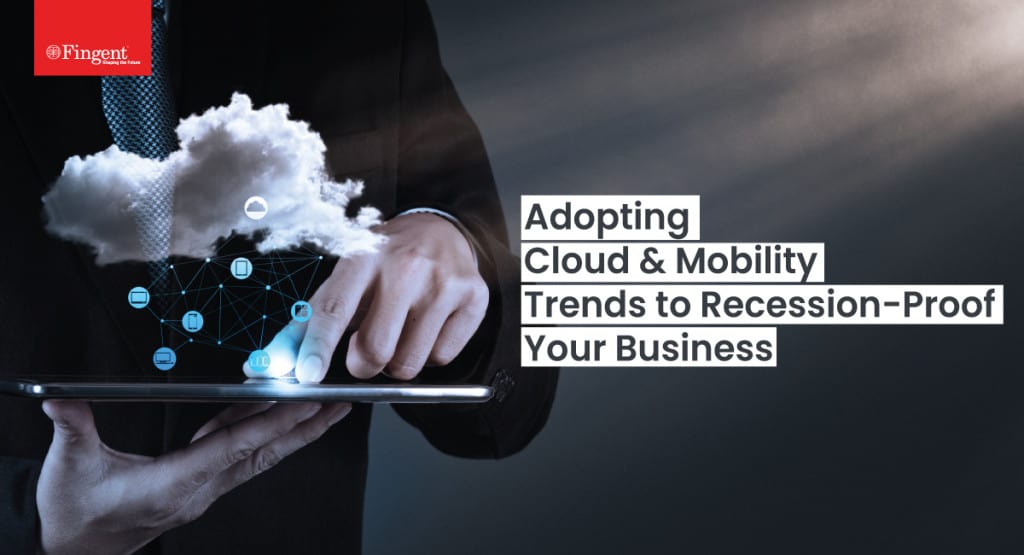Tag: Analytics
2021 saw great challenges overcome, extraordinary feats accomplished as businesses fought tooth and nail to keep their doors open. It has also been a time of great innovation. While the pandemic reshaped the previously established ways of life and work, the appetite for transformation continued to grow.
Though 2021 was a difficult year for businesses, the year’s disruptions led many businesses to adapt to the times and operate with impressive levels of flexibility. It was a year that presented learning, change, and growth opportunities.
As 2022 gathers momentum, businesses looking to rebound after the pandemic must consider all major technology changes that have happened in 2021. Doing so will aid in making decisions that will enable their business to demonstrate fortitude and remarkable ability to adapt as necessary under extraordinary circumstances.
This blog recaps key milestones and moments in 2021 that helped businesses break free from survival mode and refocus on a bright and successful future.
The Growing Reach of Digital Transformation
The digital transformation took center stage for businesses as legacy processes and old-school systems could not meet the demands of consumers and employees. Artificial intelligence-driven smart systems helped businesses become more resilient in a locked-down world.
These digital transformations enabled businesses to function efficiently, employees to increase productivity, and empowered customers to shop from the comfort of their homes. Towards the end of 2021, these new technologies and tools continued to mature and to create a future where people are shaping the world to fit their needs and preferences.
Workforce Technologies Increased Employee Productivity
In the pre-pandemic era, working from home was not considered as productive as working in the office. However, a two-year study by Great Place to Work determined that employee productivity was the same or even better when they worked from home.
Read more: Fingent Recognized as a Great Place to Work-Certified™ Company
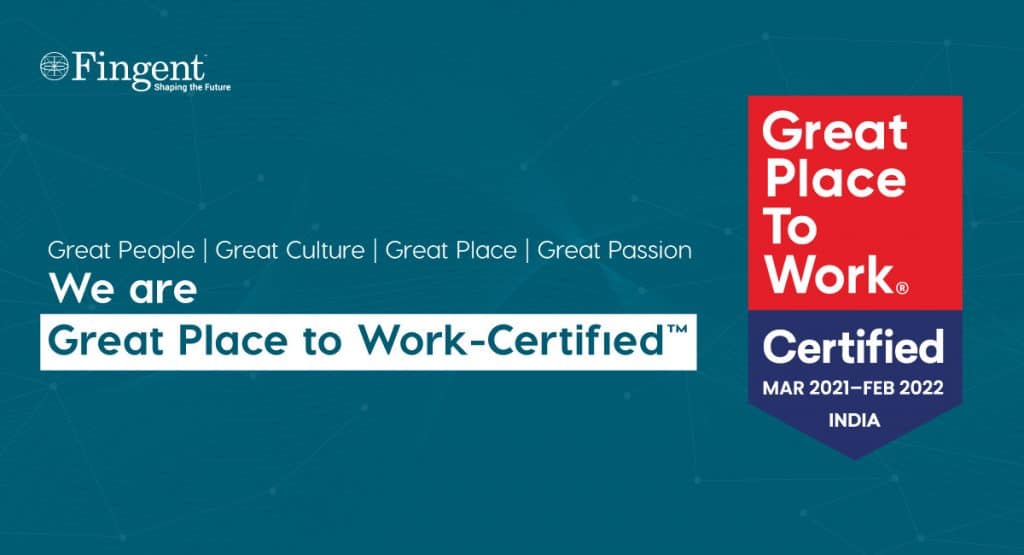
As the workforce technologies got better, faster, and more powerful, there was an exponential rise in the hybrid workplace concept. These technologies allowed businesses to retain the culture, stability, and social interaction of a physical office as they allowed their employees to choose remote work.
The AI-powered HR technology empowers employers and employees to customize goals, roles, and structures. These powerful technologies help hybrid teams to stay connected to live, interactive systems even if they all work in different time zones.
Case Study: Learn more on how Fingent’s AI-Powered Virtual Assistant helps employees with HR & DevOps queries
Enhanced Omnichannel Experience
Providing a fluid omnichannel experience is critical to satisfying customers and building customer loyalty. An omnichannel experience enabled customers to interchange devices and move fluidly between various platforms. It created a truly seamless and consistent experience regardless of channel.
It allowed customers to start their search in one channel, pick it from where they had left on another device, and yet take the context forward with every interaction. Businesses ensured to develop their omnichannel strategy by unifying the digital and physical world.
The adoption of omnichannel enhanced retailers’ experiences as well. For instance, a customer may reach out on live chat with an issue and end the call only to realize later that he forgot to ask one more thing. Now, he may call customer service instead of using a live chat. Omnichannel experience will allow the agent to pull up that customers’ previous chat and have all of the contexts to quickly resolve his issues.
Personalization and Hyper-personalization with AR and VR Technologies
Personalization and hyper-personalization are the most advanced ways to increase revenue, smoothen customer journeys, and make conversations more meaningful. Personalization can be achieved only through careful analysis of customer data.
In 2021 businesses saw how retail analytics tools can provide actionable insights into customers buying patterns and preferences. This will help in customizing the offering. Virtual try-on, and AR in retail enable immersive shopping experiences. Moreover, high-value customers can be catered to exclusively and attract the right customer to increase sales.
Read more: Creating a Future workplace with AR & VR!
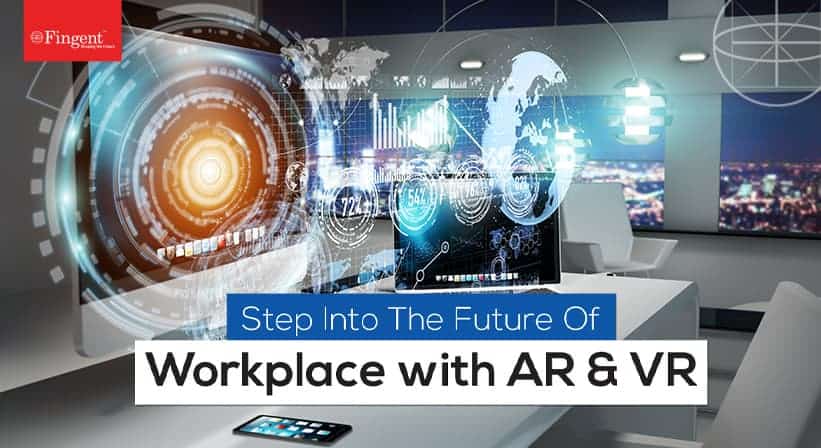
Blockchain Took Center Stage
Blockchain interoperability got better in 2021. It has been used to transform the nature of transactions and trade across the world. Blockchain technology made cryptocurrency a possibility. It is instrumental in lowering transaction costs, providing protection from cyber-attacks, helping maintain confidentiality, and more.
Another popular blockchain trend was BaaS or Blockchain as a Service. It is a cloud-based service that enables users to develop digital products like smart contracts or applications that can work without any setup requirement of a complete blockchain-based infrastructure.
Read more: How Blockchain Enables The Insurance Industry to Tackle Data Challenges
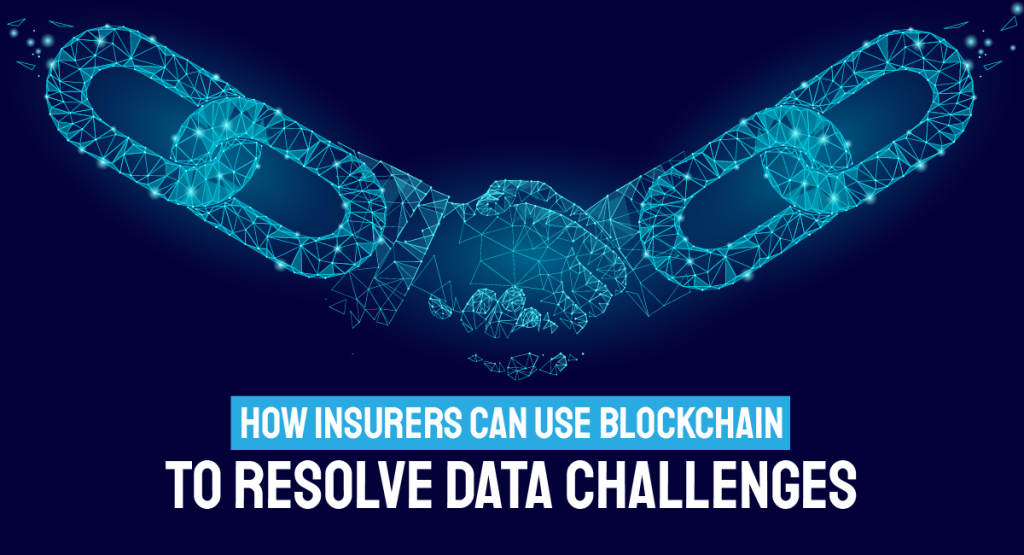
Real-time Visibility into Inventory and Services
To meet customer expectations, it is crucial to have the ability to view and track inventory levels at all times. Real-time visibility enables businesses to prepare for the unexpected. It also provides data and analytics needed to made better business decisions.
So, appropriate tools that leveraged AI and ML brought about improvement in maintaining accurate stock and preparing for future demand. These tools provided end-to-end visibility across the supply chain and helped businesses meet the growing customer demand.
Read more: How Data Warehousing Adds Value to Data Visualization and Reporting
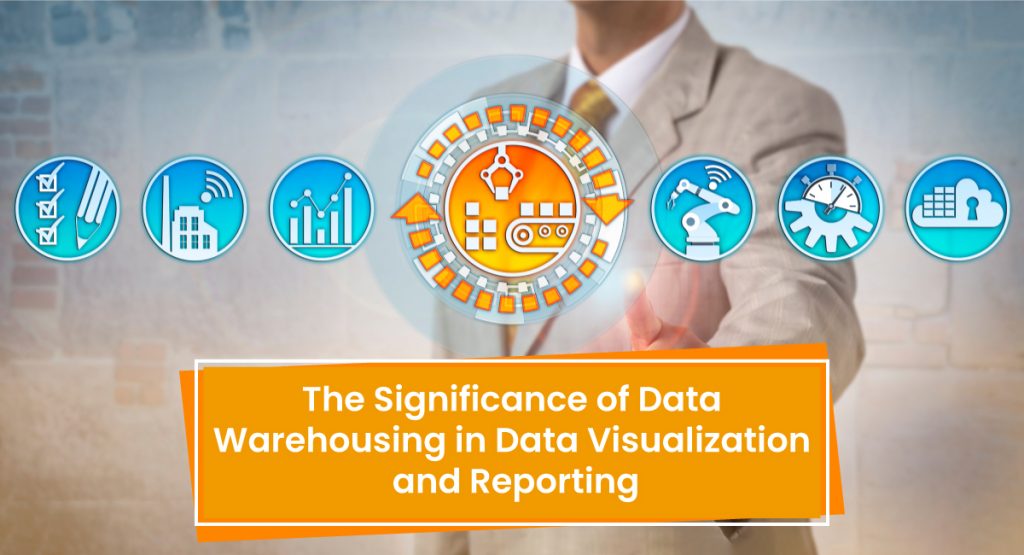
NFT Gains Traction and Expand into New Areas
In 2021, NFT (Non-Fungible Token) is drawing in new artists, musicians, and other creative people who want to make money. NFT bunny is modeled after social networks with each user having the ability to communicate with other users. Binance NFT allows an artist to buy or sell collectibles and other artworks.
Demand Forecast with The Help Of AI, Big Data, And Analytics
Data-driven business transformation gained popularity among retailers as it provided a strategic advantage. AI, Big Data, and Analytics help in understanding the deep patterns of the data from various sources used for demand forecasting. Retailers have immensely benefited from hourly, daily, weekly, and monthly level forecasts.
Resilient Supply Chains
The strategic application of AI-powered technologies has enabled complex and resilient supply chains. This has improved same-day delivery options. 2021 also saw the expansion of e-bikes managed by user-friendly apps and cloud-connected supply chain technologies.
Rising From the Ashes with Smarter Business Technologies
2021 has been a challenging year for most businesses. Amid pandemic and political upheavals, we saw exciting advances and breakthroughs in businesses technology. Also, customers are more value-conscious today than before. These technologies help reduce business operations costs and pass on the benefit to the customers. Leveraging these technologies is a smart way to build a resilient business. Excited to know which technology is best for your business? Call us and let’s work it out together.
Stay up to date on what's new

Featured Blogs
Stay up to date on
what's new



Talk To Our Experts
What are the steps involved in a tried and tested cloud migration strategy?
Cloud is becoming an integral part of today’s market. More and more companies are adopting it. Commenting on the statistics of cloud adoption, Hosting Tribunal said that “the hybrid cloud is the weapon of choice for 45% of enterprises.” Also, it forecasts that the public cloud service market is expected to reach 623.3 billion dollars by 2023 worldwide. Why is cloud adoption so popular right now? Is cloud necessary in today’s market? What is the best cloud migration strategy for a smooth transition? These questions will be addressed in this article.
Is cloud necessary in today’s market?
“Cloud computing is not only the future of computing but the present and the entire past of computing.”
– Larry Ellison, Oracle.
Not so long ago, enterprises had to establish and maintain their own server to host and run applications on their premises. Today, cloud computing is revolutionizing all operations of the business world. Though relatively new, this technology became the cornerstone for the digital transformation of enterprises. Cloud technology provides companies with on-demand data storage, computing power, and many other cloud services. These services are maintained by service providers at remote data centers.
By partnering with a cloud migration services provider like Fingent, you can easily overcome the challenges that come with sudden operational demands, higher operational expenses, and ineffective processes. This frees your business and employees from maintenance issues.
Read more: Why It’s Time to Embrace Cloud and Mobility Trends To Recession-Proof Your Business?
Here are a few more compelling reasons why the cloud is necessary for today’s market:
1. Cost-effective
Cloud computing is a subscription-based model. That would mean there are no purchasing, labor, or maintenance costs. Since cloud computing is a technology that provides services to companies, you only pay for what you use. This allows you to optimize your budget more efficiently.
2. Digital transformation
The traditional ways of operation are becoming too costly and obsolete. Digital transformation is the surest way to remain competitive in today’s market. Digital transformation occurs when a company uses a cloud migration strategy to migrate all business operations to the cloud.
3. Data backup and recovery
One of the greatest benefits of cloud computing is cloud storage. That means cloud makes data accessible and usable, even remotely. Such accessibility does not expose data to risk because, in the cloud, data is never stored in one place. It is split into fragments and encrypted before it is distributed across various locations. This also ensures that your data is protected from cyber-attacks or natural disasters.
While there are many benefits of cloud migration, you must exercise caution. Miguel Angel Borrega, Senior Director Analyst at Gartner warns: “Through 2024, 80% of companies that are unaware of the mistakes made in their cloud adoption will overspend by 20 to 50%.” What is the solution? A well-planned cloud migration strategy!
Read more: 7 Common Mistakes Non-Tech Businesses Commit While Taking Up Tech Projects
7 steps involved in cloud migration strategy
Having a cloud migration strategy ensures you do not miss any essential steps during your move to the cloud. Use the steps below to create a cloud migration strategy and make your transition as smooth as possible.
1. Understand and select cloud migration options
Each company has its own peculiar scenarios. Understanding these will help you choose from all available options for a smooth migration. These options could range from leveraging an existing application workload environment to rewriting the application partially or even wholly. These options are:
- Lift and shift/rehosting
- Extend to the cloud
- Cloud optimized
- Cloud-native
- Replace with SaaS
2. Set up a cloud management team
The first step is to create a cross-functional team to oversee the transition. This team should be capable of managing the migration from start to finish. Cloud migration teams serve as a central point of contact. This team includes representatives from each department who would either be hosting or using the applications in the cloud.
They must ensure the following:
- Adjust applications before migration begins
- Monitor each application as it moves to the cloud
- Address any functionality issues
- Collect and implement feedback from users
3. Pick the right platform and provider
Don’t make the mistake of picking the first option you come across. Before making a choice compare different cloud platforms and migration models and then pick the one that best suits your business. Here are the three principal levels of cloud platform services:
- Infrastructure as service (IaaS)
- Platform as a service (PaaS)
- Software as a service (SaaS)
After you choose the level of service, pick the cloud provider that works best for your business.
Read more: Cloud Service Models Saas, IaaS, Paas – Choose the Right One for Your Business
4. Collect baseline analytics
Ensure to collect baseline analytics before you move anything to the cloud. Such pre-migration data provides you a basis for comparison when you run analytics on your cloud-based applications. This will help you see how speed, user experience, and other metrics have improved. This also allows you to understand when something goes wrong during the transition and correct it.
5. Gauge and Address Security Risks
Implement cybersecurity to protect sensitive data. Ensure security at your end and in the cloud. Most importantly, ensure that the migration itself is secure. According to Forrester, 43% of internal data breaches were from accidental mishandling of sensitive information. You must evaluate and address any security issues before migrating any applications or data. This will prevent data breaches.
Read more: Safeguarding IT Infrastructure From Cyber Attacks – Best Practices
6. Initial strategy: Move a single application as a test
Now that everything is in place for a smooth migration, you must be eager to make a complete shift as soon as possible. Hold on! Starting small is a wise cloud migration strategy. First, move one application or a group of applications that do not have a lot of dependencies. Once it starts running in the cloud, evaluate its performance. That first app will help you make pre-migration changes to the rest of the applications.
7. Refine and finalize your strategy: Measure post-migration performance
Once the migration is completed, measure the performance of all your applications with the help of KPIs. Comparing the performance data will help you see how performance changed after cloud migration. That data can be used to make logging improvements and to detect problems. At this point, if you notice errors or low-performance levels, you can address these quickly before they cause any significant downtime.
Read more: Cloud Migration: Essentials to Know Before You Jump on the Bandwagon
No-brainer
Cloud computing is called a “no-brainer” because it offers enhanced security, stability, and greater flexibility. To completely benefit from it, companies must have a successful cloud migration strategy. The success of migration depends on meticulous planning and consideration of every aspect of your business. The seven-step cloud migration strategy given above will ensure an easy migration for your organization. Partner with us to ensure that your cloud migration strategy goes without a glitch and propels you to success.
Stay up to date on what's new

Featured Blogs
Stay up to date on
what's new



Talk To Our Experts
Analytics in Sports: Redefining the Tactics of Winning Games with Statistical Data
Sports used to be simple. Play the game and compete to win. Entertainment value aside, athletes and teams would target to compete better than the others in order to win competitions, to get those points on the board, and get their hands on the prize. The bonus- fame, money, and fans!
When it came to improving abilities, athletes and sportspersons trained hard, worked on their fitness and skills in order to reciprocate that out on the field of play. Coaches monitored, advised, and mentored them enabling the players to get better and fitter so that they could outperform their opponents. Fans followed their beloved teams and stars through various forms of media all the way from print to electronic.
When it comes to gaining a competitive edge today, training and working hard are not enough. An athlete or a sportsperson needs to know more about specific areas they need to improve, how they can maximize their strengths and minimize their weaknesses, how they can target the competition among many other areas. The necessity to identify those minute yet significant attributes and generate new metrics and key performance indicators has prompted data analytics to make its foray into sports.
Discover the applications and dimesions of sports software with Fingent. We provide Custom software and analytics solutions for the sports industry to keep track of athletic performance, to create engaging fan experiences, and with the power of analytics assist your coaching staffs with better statistics.
Analytics – The New Player
Analytics has completely disrupted the way organizations go about with their businesses by using the one commodity that globally, every industry, or every business across every domain generates: Data!
Data is what runs the show today. And it is analytics that has changed the world by using this data in infinitely creative ways to provide individuals, groups, or organizations with insight into what the data means, what information can be obtained from this data and how can this information be used to deliver positive outcomes.
Read more: How Cognitive Computing is Revolutionizing the World of Sports
What does Analytics do?
Analytics identifies this data and gathers it into a common ground so that it can be structured into information. And this information generates insights that drive business decisions. Business decisions power growth and growth defines success.
Simply speaking, analytics is a linear trajectory that empowers an individual or organization to transform itself. Analytics can be thought of as not only identifying and interpreting data but also the application of data patterns and various techniques that help in effective decision-making. Decision-makers use this information to identify past trends and make informed decisions that can have future business implications.
Consider the thought – ‘If only three out of five routes were being used by commuters to travel from New York to Boston yesterday, then improving the other two and adding two more routes could reduce travel time by 25% within the next 5 years assuming the rate of growth of traffic on the road stays constant at 15% annually’.
Analytics has changed the way we ask questions. The above example is meant to be some of the simpler scenarios of insight that one may gain using data analytics. The richness of data harnessed the power to make informed decisions. That is what analytics does.
And now, the Sports industry has a new best friend.
Analytics and Sports
While the theory of sports analytics and the study of performance statistics might have been around since the 1980s, it was hugely popularized by Billy Beane – General Manager of the American baseball team the Oakland Athletics during the late 90s and early 2000s. Some of you might be familiar with the movie or the book Moneyball. Moneyball was inspired by Billy Beane’s study of Sabermetrics or the empirical analysis of baseball statistics that measure in-game activity. Beane implemented methods to identify key performance indicators of players that would collectively bring in an improvement on his team’s performance in the long run. Using this approach, he built a competitive team that, despite having one of the lowest operating budgets out of over 30 teams in professional American baseball, consistently managed to produce performances placing them in the top five to ten teams in their league.
Global sports analysts and industry experts have remarked that the sports analytics industry is potentially expecting to reach a value of $5.2 billion dollars by 2024. Not bad for an industry that had a market value of around $125 million just about a decade ago.
Analytical approaches, however, are different when it comes to different sports. For example, baseball and cricket generate a majority of their data points during one to one interactions between players on the pitch, such as a pitcher pitching to a batter or a batsman hitting the ball towards a specific fielder. The approach used here could not be implemented in a game like Football (Soccer) or Basketball where multiple players are interacting with each other simultaneously with interactions becoming more attached among themselves if the ball happens to be closer to them.
There is no hard and fast rule when it comes to what techniques can be applied and that is where the beauty and challenges lie when it comes to applying analytics to sports.
Key areas in Sports that Implement Data Analytics Techniques
Here are some key areas in sports that implement data analytics techniques as sports organizations look to maximize performance and revenue.
1. Performance Tracking and Analysis
The seemingly minute margins are what make the difference between winning and losing. This is where analytics has helped athletes and teams improve themselves both physically and mentally.
Gone are the questions such as ‘How many goals did we score?’ or ‘How many assists does Player A have?’. Today the questions asked are more along the lines of ‘Player A has a pass percentage of 95.6 from which 47% of those passes were 15-yard passes. 34.5% of these 15-yard passes were forward passed. What percentage of those passes created a goal-scoring opportunity for our forward?’
or
‘Player B has made 4.5 interceptions per game over the last 25 matches out of which 80% of them happened in the middle third section of the pitch. If we can have player A close to B during these interceptions, A could then pick up the ball and make a 15-yard pass to quickly release our forwards, could he not? This ideally means that we should pair players A and B closer together in our matches.’
Once again, the examples mentioned above are some of the less complex questions that are asked with respect to utilizing analytics across sports teams. And it only gets more interesting from there.
2. Monitor and improve performance
Giving coaches and managers data ranging from the distance covered, area coverage maps, heartbeat rates to passing percentages, shot classification, positioning data, and much more allows them to analyze in great depth. Devices such as fitness bands and video cameras coupled with custom algorithms enable the recording of such data which is presented to the coaches and managers as part of a massive statistical datasheet. This gives them the flexibility to identify key statistics and use them to plan training patterns and routines.
Coaches can use this data to tailor specific training programs for their teams and individual athletes that can help them improve on key performance areas relevant to their playing style. On another front, the data can also be used to identify key improvement areas so that specific drills and exercise routines can be implemented to develop on them. Or, this data can be used to target specific weaknesses of rival players so that the team can exploit them to gain a tactical advantage.
3. Fan Engagement
The last couple of decades saw technology and digitization invading the sports industry in a way that nobody could even think of 20 to 30 years back. With smartphones and mobile apps getting so popular today, sports teams and organizations are utilizing technology to engage with their fans to provide better customer experiences, gradually increasing the marketability of sports.
Sports franchises have used mobile apps coupled with analytics to improve the experiences of match-going fans. Fans can be rewarded with discounts, ticketing offers, merchandise offers, VIP seats, or player engagement opportunities based on their attendance, seat preferences, snack preferences, and more. Fans also stream matches online today. With applications utilizing basic information to identify fan demographics such as age, location, and teams they support, sports clubs and franchises have found ways to offer personalized packages to fans that enhance their user experience.
Television and digital media are used as platforms where fans can interact not only with each other but also their players, club officials, sports pundits, and analysts as they come together to exchange ideas, opinions, and to network. Having team and player performance statistics available for visualization to the everyday fan brings out the analyst in them as well, giving them the sense of being more involved with their favorite sport, team, and heroes on the pitch – a sense of ownership if you will.
Read our case study: Legends Personal Training 3.0 – How Fingent developed a fitness regimen app for a select group of personal trainers and health professionals in Wimbledon and Kingston.
How Analytics Boosts Revenue Generation in Sports
Generating revenue is undoubtedly one of the most important aspects of running a business. This applies to sports companies too – be it running a sporting franchise, a team, or a league.
Some of the common avenues that sports teams explore include television deals for broadcasting games, ticketing for stadiums, corporate sponsorships, merchandising, and of course, player trades or transfers.
Examples of how analytics contributes to sports revenue:
- Analysts could identify leagues with potential based on past victories, player potential to attract crowds. For example, leagues, where teams have larger stadiums, would be prime candidates to earn more money through ticket sales.
- Using data, sports teams can identify the fans who attended the games, made in-stadium purchases, and the movements within the premises. This information could be pivotal for the corporate personnel as it would enable them to have a greater focus on sponsor targeting and engagement both within the stadium and outside.
- Merchandising is a key component of a sports team’s revenue-generating model. Using fan information from ticketing, fan engagement events, or even previous purchases at the club’s stores, the decision-makers could identify potential other locations to expand their reach – enabling fans to buy merchandise of their team far easier.
- Player Transfers – There are various examples of transfer fees paid by a buying club to the selling club in order to facilitate a purchase for the services of a player. How would analytics play a role in this? There are many factors that determine the ‘value’ of a player – such as his/her current form, age of the player, the relative proximity of the player’s ability in terms of current ability and peak potential, marketability of the player, and various other factors. Analysts work out algorithms using a variety of these parameters to determine optimal market values which are then used as a starting point for any player trade or sales.
Read more: iBeacon Technology in Sports and Other Industries
The Potential of Analytics in Sports
The potential of analytics in sports is enormous. Though the sports industry has debuted analytics only lately, industry experts are trying to dive deeper into the implementation of data-driven decision making. Looking at the rising number of use cases and business benefits, it’s no surprise to say that the future of professional sports lies in the hands of sports analytics.
Fingent offers a wide array of custom software and analytics solutions for sports organizations that help them manage their basic to the most complex challenges. Get in touch with us to learn more.
Stay up to date on what's new

Featured Blogs
Stay up to date on
what's new



Talk To Our Experts
In this era of rapid digital transformation, new technologies have opened up opportunities and created challenges, fundamentally transforming customer experiences, operating models and the work environment.
While the scope, scale, and complexity of business technology has evolved at an exponential rate, sophisticated technology has also become more accessible to a wider audience. Such accessibility enables a thriving digital culture which can be a source of competitive advantages across all business functions – recruiting, training, sales, sourcing, manufacturing, logistics, marketing and more. While in the past, technology providers (like us at Fingent) predominantly worked with IT departments, today we often work with functions like finance, sourcing, HR, project management and logistics, with minimal or no involvement of the customer’s IT team.
More importantly, access to robust technology is also no longer exclusive to large enterprises. Commoditization, outsourcing, and good connectivity have driven down costs, making technology accessible to businesses of all sizes, across the globe.
By providing an attractive basis for innovation, improving cost efficiency and differentiation, the synergy between technology and business processes is no longer optional, but a must-have.
Studies reveal that 55% of startups have already adopted a digital business strategy compared to 38% of traditional enterprises.
While the specific technologies that can be leveraged for business growth, will vary widely across organizations, there are a few common themes that business leaders can consider.
The Cloud democratizes Information Technology
Cloud computing is really the internet as we use it today. Dropbox, One Drive, Facebook, INFINCE, AirBnB, Twitter, Uber…. Are all in the cloud. It is really an umbrella term that covers a variety of on-demand computing and storage services as IaaS (Infrastructure as a Service), PaaS (Platform as a Service) or SaaS (Software as a Service).
Related Reading: Choose the right Cloud service model for your Business
Cloud technologies help discard or avoid the need for physical IT infrastructure, and on-premise support structures for computing capabilities, by virtualizing these across server farms or data centers. Using cloud-based services providers, businesses can leverage IT assets as programmable resources, which are global and scalable on demand. This allows a business to access or lease computing resources and storage power far greater than what it may have been able to access on local infrastructure, while still being able to scale up or down in a cost-efficient manner.
Consider V Locker, an Australian firm providing automated locker solutions for freight deliveries. V Locker manages lockers for B2B customers across the globe from Australia, using IaaS (Infrastructure as a Service) and PaaS (Platform as a Service).
On the cloud, multi-tenancy enables effective resource utilization, reducing costs to make the cloud a cost-efficient option for most organizations. For e.g. SaaS (Software as a Service) Property Management service Simple Rent uses multi-tenancy to provide a low-cost, high quality offering to the commercial and residential rental business.
While the Enterprise IT spend on the cloud is relatively small, it is the fastest growing segment, slowly replacing on-premise systems. At one end of the spectrum, Oracle and Microsoft are slowly shifting legacy products to the cloud, pushing many large enterprises to follow suite. At the other end, solutions like Infince have taken enterprise cloud a step ahead by blending SaaS and IaaS for small/medium sized businesses, providing a cost-efficient, secure cloud-based alternative to expensive alternatives. The cloud makes robust enterprise technology accessible globally to businesses of all sizes without the need to invest in expensive infrastructure or large teams.
Data – Big, Small and everything in between
With the relentless digitization of business and society, we have access to extraordinarily large amounts of data. Transactional data (from digitized business processes via ERP, CRM, HRMS, POS, and similar systems), Social data (Facebook, LinkedIn, YouTube, Twitter and the like) and Operational data (from connected devices and IoT systems) can be leveraged to provide better customer experiences and improve operational efficiency. The key is not just to gather data, but to leverage it with analysis and insight. From an organizational perspective, this can require experts from multiple disciplines to work together to peel back multiple layers of data and insight.
Related Reading: Find out how Big Data is changing the Healthcare sector.
Success depends not on the indiscriminate application of technology to data, but on a coherent approach, of identifying critical data that matter, and using the right technology to generate relevant and actionable insights, delivered to key stakeholders in the value chain, in real time.
In the realm of marketing, successful big data analytics manifest as tracking everything a customer or prospect does and generating real-time alerts to the marketer or a front line executive dealing with the customer. For instance, if the customer walks into a store, the automated analytic solution alerts the sales executive immediately, and everything related to the customer, including their preferences, purchase history, and more, surfaces to the executive’s tablet. Likewise, if a prospects click on an ad or downloads an app, the marketer gets an alert immediately, enabling them to engage the customer proactively, to close the deal or move the prospect up the lifecycle.
From Digitization to Digitalization to Digital Transformation
Digitization is the conversion of analog physical objects into digital goods. Paper to PDF or Doc, or physical cash digitized to mobile payments, physical signatures to electronic signatures – these are all digital manifestations of non-digital objects. Digital goods have low marginal costs, are non rival, and can easily be bundled with other digital or non-digital products. Consider online user manuals, learning management systems. Usually the first step in an organization’s technology journey, Digitization sets the foundation to enable Digitalization and Digital Transformation.
“Digitization and digitalization are two conceptual terms that are closely associated and often used interchangeably in a broad range of literature. There is analytical value in explicitly making a clear distinction between these two terms.” – Scott Brennen and Daniel Kreiss
Digitalization is about leveraging technology to create, enable or transform a business process- usually leading to one or more of- the discovery or new opportunities, reduced risks or efficiency gains. For example, field service management solutions like ReachOutSuite help deploy digital forms to field technicians across various locations. It reduces the risks of revenue loss due to errors, inefficient scheduling and underprepared staff. This service also increases efficiency by maximizing staff utilization and getting more jobs done pre-staff. It further enables the identification of new opportunities by enabling techs and backend admins to understand customer experience better. Digitalization of business processes is par for the course these days with a plethora of packaged and custom built software available for enterprise planning, managing business finances, training, projects, customer management, and human resources.
Find how ReachOutSuite can make a work order manager’s life simpler.
- CRM systems coordinate business processes that are key to generating leads, converting them into prospects, and, subsequently, into regular customers. Additionally, CRM software solutions supply business managers with data processing and analytic tools to help refine marketing strategies, improve customer service and track overall organizational performance. Through centralization of business data, CRM software tools streamline the decision-making process and automate repetitive tasks.
- Project management software eliminates laborious paperwork and tedious planning processes. With the right tools, businesses can control projects costs and improve the efficiency of related operations. Technology automates most project management processes to make it affordable and practical for any type of business. The main benefits of implementing project management software include – Easier project planning, monitoring and tracking, Improved collaboration, Better organization, and future planning
- ERP systems boost productivity and promote business growth in two primary ways. First is automating business processes to improve accuracy and save time for all employees. Second, ERP systems unify data generated by the business and make it available to decision-makers and other managerial parties throughout th
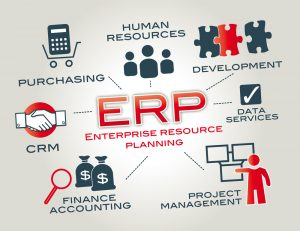 e firm. It eliminates data sharing problems among departments and makes the information accessible to everyone.
e firm. It eliminates data sharing problems among departments and makes the information accessible to everyone.
Digital transformation is about leveraging digitization and digitalization to transform a business unit’s or an organization’s approach to business. This can involve one or more of – new business models, overhauling customer experience, radically different manner of service or product delivery. The transformation is driven by the business, and not by the IT team. For instance, consider Replika, which connects brick and mortar sales to the digital realm, transforming the way sales is managed for retail. Emerging technologies will create new business models that may be hard to understand or foresee today. For instance, digital securities based on blockchain based technologies can unbundle ownership of analog assets like property or gems, while making it possible to bundle diverse asset classes to create new portfolios for investment. Such digitization of previously illiquid assets creates new customers, new strategies and new business models that may not be possible to fully comprehend today.
Related Reading: Find out how INFINCE is the ultimate digital transformation for small business of today.
In conclusion
Technology is a disruptive force. In the current ever-changing and multifaceted business environment, technology can not only help improve your businesses’ agility but can also provide cost-effective means to innovate your products and services, improving customer experience. The key is to adopt the right tools and partners, while actively planning the change and deployment.
Stay up to date on what's new

Featured Blogs
Stay up to date on
what's new



Talk To Our Experts
As technology adoption grows globally, data is being generated by enterprises and consumers alike. By 2020, it is predicted that the annual volume of data will increase by a staggering 4300%. For corporations, the key to success will be in making use of this data to derive meaningful business insights, especially by using technology.
Here, we focus on one such organization – Premium Retail, whom Fingent has helped in reducing costs and increasing sales and overall efficiency. Fingent deployed an advanced data analytics and data visualization solutions making use of Premium retail’s data.
Premium Retail Services (PRS) Inc. based in Missouri, is a company that has provided comprehensive retailing solutions for over 25 years for companies like Procter and Gamble, Walmart and Best Buy. Their services include merchandising, assisted sales and training, field marketing etc.
The challenge
When Samsung retained PRS to provide comprehensive field marketing services on its behalf in the US market, it needed to deliver a wide range of capabilities pretty quickly. PRS began by assigning Field Marketing Representatives (FMR) to carry out essential activities across the US. The data associated with this assignment alone was extensive. PRS accesses information on more than 12 vertical retail segments that produce close to 1,000,000 data points per month. Now, PRS realized that this data was a treasure trove of business and consumer insights. However, its ability to use the data for informed decision making and guide assessments was hampered by its existing data management capabilities. Moreover, it used obsolete communication and reporting systems that relied heavily on excessive amounts of powerpoint and excel files. It took a long time to process and it was outdated.
How Fingent helped
Data analytics and data visualization are trusted methods to simplify complex information. Considering the variety, volume and velocity of data involved in PRS’s reporting, Fingent proposed to use these methods to create a solution that would reduce human efforts while increasing data accuracy, clarity and credibility.
After completing an inventory of the PRS systems, Fingent developed a plan to transform an approach that produced extensive amounts of unstructured and complicated data from many obsolete, single-window applications into an integrated and better-organized solution. Fingent found it essential to identify the data touchpoints and create scalable solutions, with automated responses that helped PRS to efficiently produce customized, comprehensible reports.
The different technologies used were as follows:
Programming languages – HTML, PHP, JS
Visualization libraries – d3.js, dc.js
Databases – MySQL, Apache
The impact
PRS, through the customized web application that Fingent created, was able to efficiently convert large volumes of data into user-friendly visual representations. This enabled easy analysis of data in different permutations. The data was presented through interactive displays of charts, tables and graphs that highlight what is significant.
This application helped PRS to manage its field marketing personnel by letting managers easily bring performance metrics into the reporting tools they already had. Moreover, the users were able to customize how information was presented to them in a personalized dashboard according to region, role, department or other attributes.
The benefits that PRS derived from this application include:
- High-quality data – Through rigorous analytics, PRS was able to achieve high-quality data, reduce errors and improve consistency
Refined business processes – Through pattern analysis issues can be identified and solved in real time - Bringing out significant insights – Through identification of trends and patterns, significant insights are brought out improving data transparency and accountability
- Easy data management – Time spent on data management is significantly reduced as have related costs. System reliability is improved
On the whole, with the custom web application developed by Fingent, PRS was able to reduce the human efforts involved in analyzing the enormous volumes of data that PRS managers received on a daily basis. It also helped PRS to restructure its business process into a more viable and effective model which has significantly increased its revenue generating capacity.
Stay up to date on what's new

Featured Blogs
Stay up to date on
what's new










